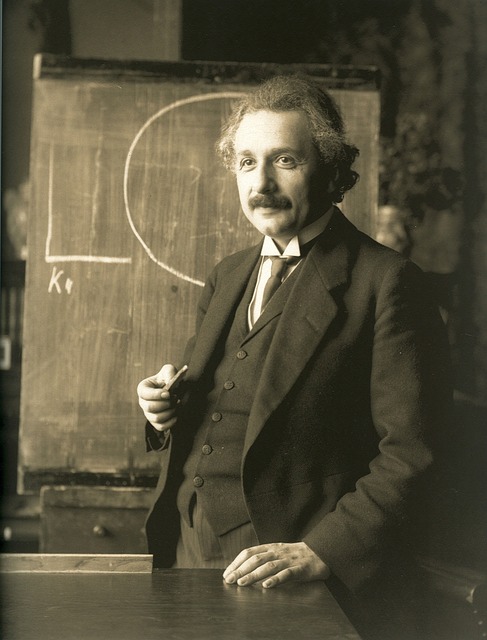Part of Einstein’s genius lay in his technique for solving tough problems. He put his subconscious mind to work using something known as attentional space. You can do the same.

I wrote a Reddit post recently about my morning routine, and it had a few commenters up in arms.
I wrote that one of my techniques is allowing spaciousness—as much as two hours to get through a one hour routine.
This extra time gives me a chance to relax while going through the steps, or sleep in a little as the case may be, and still get through it all.
The main objection was that people simply don’t have the luxury of extra time. Parents in particular seemed to think the idea was a non-starter.
I won’t dispute that parents have a different set of constraints to contend with. However, I discovered some research recently, including a story about Albert Einstein, which revealed some compelling science behind my routine.
The evidence suggests you should create something called attentional space in your own life, in order to solve your most difficult problems. And by the way parents: it doesn’t need to be in the morning!
I’m no Einstein, but he is
When Albert Einstein was stuck on a particularly difficult problem, he’d play violin until the solution would simply come to him.
A team of researchers led by Ap Dijksterhuis at the University of Amsterdam were able to validate Einstein’s technique.
The researchers asked study participants to choose which amongst four apartments they would buy. One apartment was intentionally more appealing than the others—the “right” choice. One was less appealing, and two were relatively neutral.
The participants were split into two groups. One group learned about four features per apartment (16 features total), while the other got much more information, 12 features per apartment (48 in total).
The researchers subsequently subdivided these groups again. They asked the first group to choose immediately. They gave the second group time to consciously examine the features before making a decision about the apartment. And the last group, they assigned puzzles unrelated to the decision.
The results?
When given the simpler task of evaluating just four features, participants did better when they could evaluate the decision instead of solving puzzles or choosing immediately.
But, when given the complex task of evaluating 16 features, the puzzle-solving participants with no time to think about their decision outperformed the conscious evaluators and the immediate choosers!
A similar study was done at Carnegie Mellon several years later, in which the puzzle solving was replaced by a memorization exercise.
The results were identical. Not only that, brain scans taken while the participants were memorizing numbers showed that their subconscious minds were still working on the decision.
Bottom line:
To put your subconscious mind to work on your toughest challenges, you need only create the attentional space to allow it to do its work.
Putting attentional space to work for you
Personally I like a slow morning routine because starting the day with attentional space helps me be deliberate when I do sit down to work. By contrast, if my morning routine is rushed, I am more reactive throughout the day.
However, the attentional space technique can be applied in myriad ways.
In his book The Productivity Project, author Chris Bailey tried numerous techniques for creating attentional space.
His favorite technique was also the most straightforward:
He’d set a timer for 15 minutes and sit with a pen and paper, capturing ideas as they came to him.
What’s notable about Bailey’s technique is that it requires little time and can be done by virtually anyone, anywhere.
He does it most often at home or at a coffee shop, but you could easily adapt this to a cubicle, office, lunch spot or urban park.
He also makes sure to plan his daily objectives the night before so that his mind can get to work while he’s sleeping.
(Up until recently I planned my day when I first sat down to work; now I’m going to test out the night-before method!)
Doing it the natural way
Additional research suggests that creating attentional space may have major mental health benefits when done in nature.
In The Walrus, Michael Harris writes:
A study from the University of London … found that members of the remote cattle-herding Himba tribe in Namibia, who spend their lives in the open bush, had greater attention spans and a greater sense of contentment than urbanized Britons and, when those same tribe members moved into urban centres, their attention spans and levels of contentment dropped to match their British counterparts. Dr. Karina Linnell, who led the study, was “staggered” by how superior the rural Himba were.
In other words, taking quiet time in nature will not only help you solve complex problems; it will also improve your attention span and contentedness.

Harris continues:
At Stanford University, study participants had their brains scanned before and after walking in grassy meadows and then beside heavy car traffic. Participants walking in urban environments had markedly higher instances of “rumination”—a brooding and self-criticism the researchers correlated with the onset of depression. And, just as parts of the brain associated with rumination lit up on urban walks, they calmed down during nature walks.
If you have access to a park or even a quiet street, consider creating a daily routine of walking outside.
I take a daily midday break to walk to the park near my apartment. I leave my wallet and phone behind so I literally cannot run an errand or send a quick text message.
As of this writing I’m upgrading this routine by carrying a pad and pen in my pocket as well, to capture insights I have on the fly.
A comprehensive list
If you want some additional ideas, consider the list of the top stress-relieving activities published by the American Psychological Association:
- Exercising or playing sports
- Reading
- Meditation
- Listening to music
- Take regular vacations and work breaks
- Going for a nature walk
- Spending time with friends and family
Bailey also mentions going for a massage, investing in a creative hobby and prayer as excellent options.
If you needed an excuse for more massages, now you have it: you’re solving your toughest problems while you’re at it. My personal favorite is to combine exercise with time with friends.
Key takeaways
- Schedule time for your mind to wander
- Put your phone and computer away
- Keep a notepad or scrap paper handy to capture ideas
- Find some nature for additional benefits
- Experiment with different methods until you find one that works for you
Footnotes
- Dijksterhuis, Ap. (2004). Think different: the merits of unconscious thought in preference development and decision making. Journal of personality and social psychology. (link)
- Bailey, Chris. The Productivity Project: Accomplishing More by Managing Your Time, Attention, and Energy (p. 173). The Crown Publishing Group. Kindle Edition. (link)
This was absolutely fantastic. Great post and it really has me thinking.
Is there going to be a part 2 to this? I would love more about the concept of attentional space. Maybe some first-hand reports from tech companies? With all of the ping pong tables, corporate gyms, etc… I wonder what effect this “downtime” has on productivity.
It also reminds me of Google’s 20% Time (or whatever the actual name is).
Great post!
Thanks so much Everett. That’s a great angle — I think everyone is starting to realize that some of these job perks are more fad than reality. Whereas, employees and employers alike would no doubt benefit from creating attentional space. Something to consider…
Pingback: Working Too Hard? 3 Reasons Why Results Don't Follow Effort • Focusmate Blog
Pingback: Building the Writing Habit: 3 Lessons Learned From (Almost) a 30 Days of Writing • Focusmate Blog